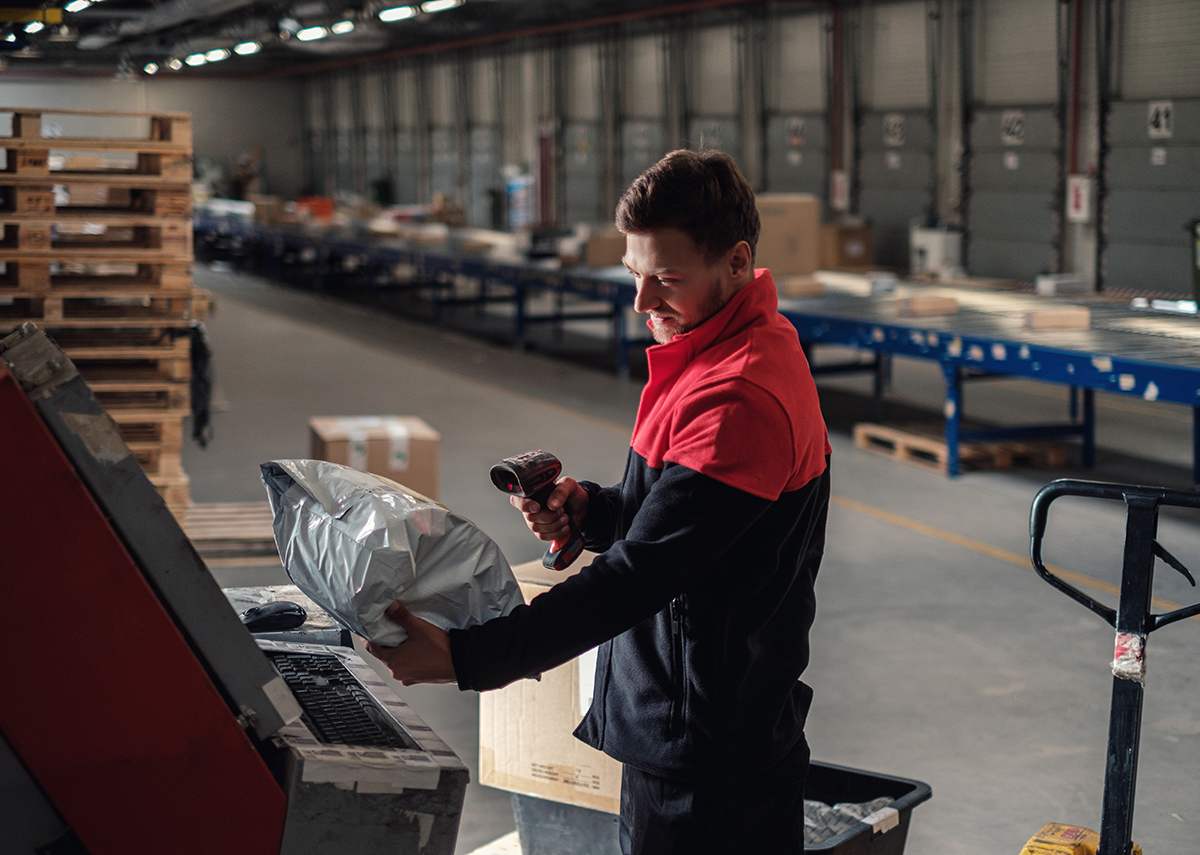The list of levers companies use to increase productivity, and consequently their competitive position and profits, is long. Particularly in intralogistics, there is often still potential to unlock untapped opportunities and warehouse optimization .
Investments in automated storage systems such as horizontal carousels or vertical lift systems can help, as they lead to higher productivity and ultimately increased profits due to significant time savings in goods retrieval. Furthermore, these systems save valuable storage space thanks to their high-density capacity and are more ergonomically designed due to the goods-to-person delivery principle, which has a positive impact on employee health and reduces absenteeism. The picking accuracy of modern, software-controlled systems is also many times higher, resulting in lower costs from order picking errors.
The following five questions are intended to help companies review their order-picking processes with regard to potential improvements:
- How much work is involved in order picking?
- What is the utilization rate of the available storage space?
- Is the picking process fast enough to meet increasing demands?
- What are the costs associated with employee absenteeism?
- How much do incorrect order picking errors cost?
Suitable for:
1. Reduction of labor costs
Order picking is more than simply taking goods from the shelf. In manual operations, it means that employees, equipped with a pick list or a handheld scanner, move through the warehouse collecting the required items one by one before returning to the picking station. Besides the length of the pick list, the duration of the process depends on the warehouse size and the arrangement of the items to be picked. Due to the sometimes very long distances and the chaotic arrangement of the stored goods, the picking process is often considered the most labor-intensive area of warehouse logistics, accounting for up to 55% of total warehousing costs. The time spent processing orders is also referred to as travel time, which, according to studies, accounts for between 60 and 65% of employees' working time. Upgrading to modern warehouse systems can significantly reduce this travel time, as the equipment automatically identifies the goods on the shelves and transports them directly to the picking station, where employees only need to pick and process them. The delays that otherwise frequently occur due to searching for items are also eliminated here. Furthermore, the software control of the machines allows for process optimization tailored to the specific spatial conditions, which further minimizes the time required.
In addition to the considerable time savings, modernization eliminates work steps, further increasing productivity: Because the systems no longer require "ongoing personnel," they operate with only a third of the previously needed workforce. These positions can be eliminated, and employees can be redeployed to other areas, thereby increasing efficiency there as well. Larger inventory volumes can thus be handled with the same number of employees.
2. Reduction of storage areas
Unlike traditional shelving systems, which are limited in height and must always be designed around the picker's reach, modern storage systems allow for optimal use of available ceiling height. Their variable dimensions enable them to be erected ten meters or more in height, resulting in significant space savings. Furthermore, these solutions eliminate the need for aisles between the shelves.
Intelligent software control can also contribute to reducing the required floor space by storing goods in optimal locations based on their size and weight, minimizing wasted space above or to the sides. This reduces unnecessary open space.
It is estimated that up to 70% of the available storage volume in conventional shelving systems is wasted due to insufficient utilization. For the reasons mentioned, this figure is reduced to approximately 20% in modern systems. The space saved in this way can then be used either for storing additional goods or for other purposes.
3. Reducing picking costs
In manual picking, employees can only process orders one after the other. Software-supported optimization of walking routes is usually lacking, and it frequently happens that employees pass through the same aisles (especially those containing fast-moving , frequently requested items) multiple times during their shift. In contrast, software-controlled models allow for the creation of batch orders , where individual items are retrieved from the warehouse and temporarily stored for multiple orders. This eliminates unnecessary waiting times and allows batch orders to be processed more quickly, thus saving valuable time.
If necessary, batches can be sorted and completed according to additional criteria (such as the urgency of the order) besides the original order, which increases the flexibility and thus the competitiveness of the companies.
4. Lower absenteeism
Picking items from shelving units is very demanding for employees; they constantly have to bend or stretch to collect the sometimes heavy goods. Added to this are the long distances they have to cover, sometimes 20 kilometers or more per shift. It's no wonder that this strenuous work takes a toll on employees' health. Research on workplace ergonomics has shown that these strains can be minimized if warehouse workers pick up goods in a "golden zone ." This zone is located roughly between hip and shoulder height, virtually eliminating movements that put stress on the spine and joints, such as prolonged bending and stretching. Of course, it would be a huge waste of space to only stock the shelving units in this zone. However, automated storage systems that deliver goods to the picking station can easily meet this requirement, as the items are taken from optimally adjustable picking openings or delivered via conveyor belts. Reducing the ergonomic strain caused by automated racking systems directly leads to a decrease in employee absenteeism due to work-related illnesses such as back problems or joint pain. The systems also feature sophisticated control mechanisms (safety gates, emergency stop buttons, sensors) that enhance employee safety and immediately halt production in case of an alarm.
Another positive aspect is that walking distances are almost completely eliminated, which means that employees do not get too tired and can therefore work more productively.
5. Increasing picking accuracy
Besides saving on labor and storage space, accuracy in order picking is another crucial factor in reducing costs. Picking errors cost not only time but also money, due to the time-consuming return transport, inspection, and restocking of the incorrect item, as well as the reshipment of the correct one. According to a survey of 250 logistics managers in Europe and the USA, their individual warehouses suffer average annual losses of nearly €300,000 due to incorrect order picking.
While 99% picking accuracy may seem relatively high for warehouse and distribution centers, if that one percent translates into losses of €300,000, further reducing picking errors is invaluable. Modern, automated horizontal or vertical warehouses, thanks to their software-supported control mechanisms (e.g., retrieval of goods via laser scanners and pick-by-light systems), now achieve picking accuracy of up to 99.9%, reducing losses by 90%. Where inaccuracies previously generated losses of €300,000, only around €30,000 remains – still a significant sum, but a far cry from the previous losses.
In conclusion, aligning your warehouse strategy with the five points listed above leads to a significant increase in productivity and competitiveness. This increase is all the greater the larger the warehouse and its throughput. Therefore, upgrading to modern warehouse systems is particularly advisable for larger facilities, as this is where the greatest improvements in warehouse productivity and cost efficiency are achieved.
Why Xpert.Plus ?
Xpert.Plus is a project from Xpert.Digital. We have many years of experience in supporting and advising on storage solutions and in logistics optimization, which we bundle in a large network Xpert.Plus
I would be happy to serve as your personal advisor.
You can contact me by filling out the contact form below or simply call me on +49 89 89 674 804 (Munich) .
I'm looking forward to our joint project.
Xpert.Digital – Konrad Wolfenstein
Xpert.Digital is a hub for industry with a focus on digitalization, mechanical engineering, logistics/intralogistics and photovoltaics.
With our 360° business development solution, we support well-known companies from new business to after sales.
Market intelligence, smarketing, marketing automation, content development, PR, mail campaigns, personalized social media and lead nurturing are part of our digital tools.
You can find out more at: www.xpert.digital – www.xpert.solar – www.xpert.plus
[1] Martin Murray, “Order Picking in the Warehouse,” About.com Logistics and Supply Chain Guide, accessed January 5, 2014, http://logistics.about.com/od/operationalsupplychain/a/order_pick.htm
[2] Lee Rector, “Warehouse Slotting,” Toolbox.com SCM Blogs, accessed January 5, 2014,
http://it.toolbox.com/blogs/warehouse-planning/warehouse-slotting-6655
[3] “Mis-Picks Cost Businesses Nearly $390,000 Per Year According to Intermec Study,” accessed January 4, 2014,
http://www.intermec.com/about_us/newsroom/press_releases/2013-01-21-Mis-Picks-Cost-Businesses.aspx


